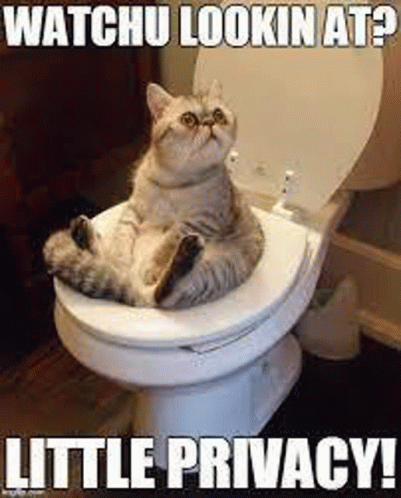Table of Content
- Privacy?
- Information Privacy
- Privacy Threats
- Information Privacy
- Terminology
- Information Collection
- Tutorial
Privacy?

- Privacy is defined as the ability of an individual or group to seclude themselves or information about themselves and thereby reveal themselves selectively
- It is also described as not being seen, used, or shared by others
- Another definition calls privacy a “zone of inaccessibility”
NOTE
The concept of privacy is related to the notion of access, which includes physical proximity to a person and knowledge about a person
Information Privacy
is a combination of two aspects

- Communications privacy: The ability to communicate with others without being monitored by other persons or organisations
- Data privacy: The ability to limit access to one’s personal data by other individuals and organisations to exercise a substantial degree of control over that data and its use
Privacy Threats
- Intentional, institutional uses of personal information
- Unauthorized use or release by “insiders”
- Theft of information
- Inadvertent leakage of information
- Our own actions
Information Privacy
The use of Information Technology involves various activities that raise privacy concerns, These privacy-related activities can be put into four categories
- Information collection: Gathering personal information
- Information processing: Storing, manipulating, and using collected information
- Information dissemination: Spreading personal information
- Invasion: Intruding upon a person’s daily life
Terminology
- Informed consent: Users being aware of what information is collected and how it is used
- Invisible information gathering: Collection of personal information about a user without the user’s knowledge
- Cookies: Files a website stores on a visitor’s computer
- Secondary use: Using personal information for a purpose other than the one for which it was provided
- Data mining: Searching and analysing large amounts of data to find patterns and develop new information or knowledge
- Computer matching: Combining and comparing information from different databases, possibly using identifiers like social security numbers, to match records
- Public record: Information intended for public access, such as birth certificates, marriage licences, criminal records, and property deeds
- Personal information: Undisclosed information that is not public record or public information (e.g., religious affiliation)
- Public information: Information revealed to an organisation with the right to share it, which is easily accessible and can be freely passed between organisations (e.g., name, address, phone number)
Information Collection
Consumer Profiling
- Companies openly collect personal information about Internet users
- Cookies (text files downloaded by websites to identify visitors later) are used
- Tracking software analyses browsing habits
- Data is collected from website visits to provide customised service, including GET data, POST data, and Click-stream data
Data collection policies
- Opt-out policy: Assumes consumer approval unless they actively forbid the organisation from sharing information. This is favoured by data collectors.
- Opt-in policy: Requires specific permission from consumers before collecting any data. This is favoured by consumers and is seen in examples like loyalty programs
Personalization software
which uses rules-based, collaborative, demographic filtering, or contextual commerce methods, is used by marketers to optimise ad placements
Consumers can take steps to limit or stop the deposit of cookies, such as setting browser limits, manually deleting cookies, using cookie-management programs, or using anonymous browsing programs